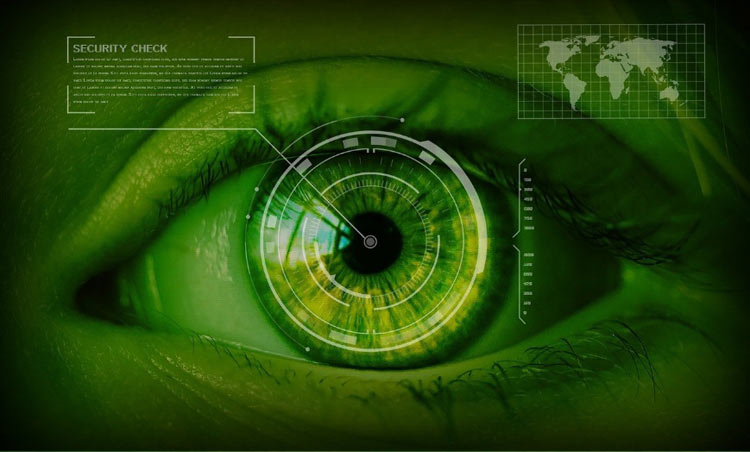
Many buildings still use keys, keypads, and access cards to enforce access control. These legacy methods rely on a password or physical tokens, which are no longer a secure access control methods and incur a substantial overhead. In recent years, there has been an increasing shift toward biometric access control that provides access based on physical characteristics.
What is Biometric Access Control?
Biometrics is a method of determining a person’s identity based on behavioral, physical, or chemical attributes. A biometric access control system uses pattern recognition to collect unambiguous biometric data, then compares it to a template already stored in a database to determine if a specific user is who they claim to be. Biometric authentication provides a more secure and reliable form of identification because it requires the physical presence of the individual to authenticate.
This technology has a wide range of applications, including physical access control, airport security, law enforcement, and banking transactions. As demand for higher security and user convenience increases, more organizations are turning to access control systems that are based on fingerprints, facial recognition, and iris scanning.
Fingerprint Access
Fingerprint-based biometric systems have been used in law enforcement (to identify criminals) since the late 1800s. In modern access control applications, fingerprint scanners collect unique fingerprint data, analyze it, and record it in a data file for future comparison. The fingerprint pattern is captured with the user’s consent when they register with the authorization database for the first time. The stored data will then be used as a reference template whenever the user tries to gain access.

One of the key benefits of fingerprint access control is that it is very easy to set up. There aren’t any cameras or lots of moving parts involved. The integrator only needs to install a fingerprint recognition terminal near an entry point and connect it to a specific door lock.
Fingerprint access controls are a popular choice for many businesses and facilities because they are also difficult to hack. Users are identified using unique biometric data - not passwords or codes that can be forgotten or stolen. This helps keep intruders away from restricted areas and equipment. In the past, only high-security installations could afford to deploy a fingerprint-based security system. The cost of this technology has however dropped significantly over the last few years - making fingerprint access control available to a wide range of low-budget applications.
While fingerprint scanning is an incredibly accurate method, it is important to note that the scanner can still be thrown off. Imperfections such as small cuts on a finger can lead to an authorization denial for people who should otherwise be able to enter. This problem may be solved by combining fingerprint scanning with a backup method such as a passcode.
Thanks to its high accuracy and convenience, fingerprint access control has made its way to smartphones and other mobile devices. Utilization will continue to increase as average users get more comfortable with this technology.
Face Recognition Access
Face recognition is a way of identifying and verifying users by their facial characteristics. Biometric technology is used to map facial features from a photo, video, or real-time feed. The resulting pattern is compared to a database of pre-registered faces to find a match and identify the user.

In access control applications, face recognition access control is beginning to replace key cards and other legacy systems as it enables a passive, frictionless, and seamless access solution. Users do not have to worry about forgetting their badge or keycard combination. They only need to momentarily pause at a door point reader and wait for the door to open. This ensures total convenience and saves time when users are entering the building. At a time when many organizations are wary of the spread of infection, face recognition can enable a touch-less, hygienic experience.
Despite many benefits of facial recognition technology, concerns still exist. Matching errors may manifest due to poor images, bad angles, or bad lighting. At a time when massive data breaches are occurring on an almost regular basis, there are also questions over privacy. Users may be unsettled to think that their facial image is at risk of being stolen. Some of these limitations may be overcome by using layers of encryption for privacy, using artificial intelligence to improve system functionality, utilizing higher resolution cameras, and using 3D sensors to guard against spoofing.
Recent advances in facial recognition have resulted in a rapid expansion of how this technology is used. Airlines are increasingly using facial mapping to replace boarding passes. Smartphones from Apple and Samsung already use face ID for device unlock. As mechanisms for privacy and security regulations continue to be developed, we can expect facial recognition applications to be even more prevalent in the future.
Iris and Retina Scanning
Iris and retina scanning technology use the eye as a characteristic for authorized user identification.
Retinal scanning requires the user to get very close to the scanning device. A beam of light will be sent deep inside the eye to capture an image of the retina (located on the back of the eye). Because this method is quite intrusive in nature, it is not widely used today. Retinal scanning provides more accuracy compared to other types of biometrics but also remains the most expensive access control method.

Alternatively, iris scanning uses a camera with subtle infrared illumination to capture an image of the intricate structures of the iris. A digital template will then be encoded from these patterns and used as a reference point for positive verification of an individual. This method is extremely resistant to false matches because of the stability of the iris as a protected internal - and yet extremely visible - organ of the eye. Iris scanning is also non-intrusive because the camera can capture an image of the iris at a distance of between 3 and 10 inches away. Iris scanning technology is already being used to automate border crossings in some countries. While iris scanning is highly accurate and very secure, it may still be thrown off by contact lenses, dark eyes, and lashes.
Adoption of iris scanning is beginning to gain momentum. Modern iris scanning access controls are able to detect people in motion, capture accurate results through contact lenses and eyewear, and operate reliably in low light conditions. There’s a growing application of these systems in law enforcement, healthcare identification, consumer banking, and enterprise.
To conclude, we can say that biometrics technology offers clear-cut advantages (high-security assurance, user experience, non-transferable, etc.) that continues to amplify its suitability for access control applications. In addition to the technologies covered above, other biometrics credentials that are taking root include speech recognition and palm vein identification. Organizations that are able to stay ahead of developments in biometric technology and effectively address emerging IoT security challenges will be better placed to use the latest technology for a reliable and convenient security administration.






Excellent articles to read and make projects.
Site is beautifully laid out and I like the system for projects to easy saving to my desk top
Keep it going for the geeks to excell in the subjects you are publishing.